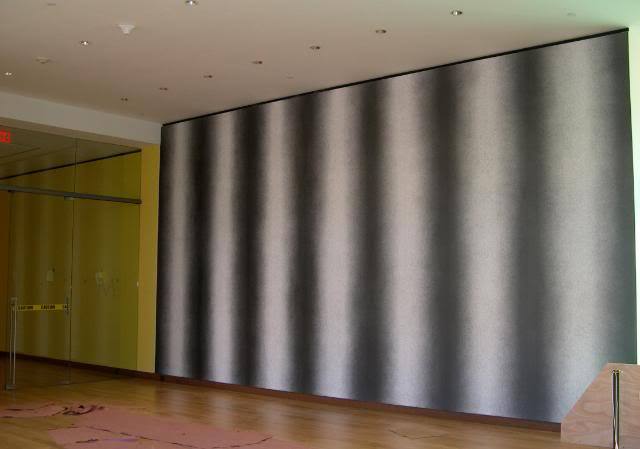Sol Lewitt earned his place in Art History as a leader in the mid-20th century Conceptual Art movement. In Conceptual art the IDEA, rather than the object is paramount. What I, for example, see and experience in a gallery space by the Conceptual artist is a “document” of what the artist is thinking. LeWitt illustrates his role as an architect who comes up with the design or blueprint that the engineers and construction workers follow. Instead of executing works of art himself, LeWitt comes up with an idea or plan for his art, a set of instructions and then hands the plan over to his assistants, and they construct the work.
At the New Britain Museum of Art you can experience this process in work “Wall Drawing 1196: Scribbles,” from 2005. I had the privilege of witnessing LeWitt’s six assistants produce this “simple in form but monumental in scale,” work over a two-week period. Through the medium, no. 2 pencils, the assistants scribbled directly on to the wall. The result is LeWitt’s original “concept” or idea, from paper to an enlarged piece of columns formed like a funnel. Some viewers describe it as a tornado; one critic likened each to the “residue from a giant exhaust pipe.” Below are two images; the one to the left is the six assistants on a scaffold executing LeWitt’s plan or “idea,” and on the right, the completed work. Image credit: NBMAA http://www.nbmaa.org
The real purpose of sharing with you a LeWitt work in the NBMAA collection is because of a portrait I came across walking on one of my many visits through the gallery spaces. “Untitled (Female Portrait), on view for the first time, is an early painting by LeWitt. The painting is of a young woman in a button-up white shirt and green blazer. Her face has a sculptural quality reflecting the artistic style of the mid-20th century; gracefully contoured face, almond eyes beneath uniformed arched eyebrows, elongated nose; her lips shaped like a Cupid’s bow add a hint of sensuality to a woman whose gaze looks past us. Through this unnamed woman, we can see his interest in the figural, and evidence of his early development as an artist. We also get a glimpse of the trajectory of LeWitt’s evolvement from an abstracted aesthetic to a visual vocabulary of simplified shapes, basic colors, lines. What moves me most in “Untitled (Female Portrait) is the imbuing of paint, color, broken brushwork that composes and builds up the elegant form of her face and pensive expression. A wonderful and delightful prequel to the artist who challenged the fundamental belief that the production of art is an outcome of the artist’s hand.

Image Credit: NBMAA http://www.nbmaa.org


